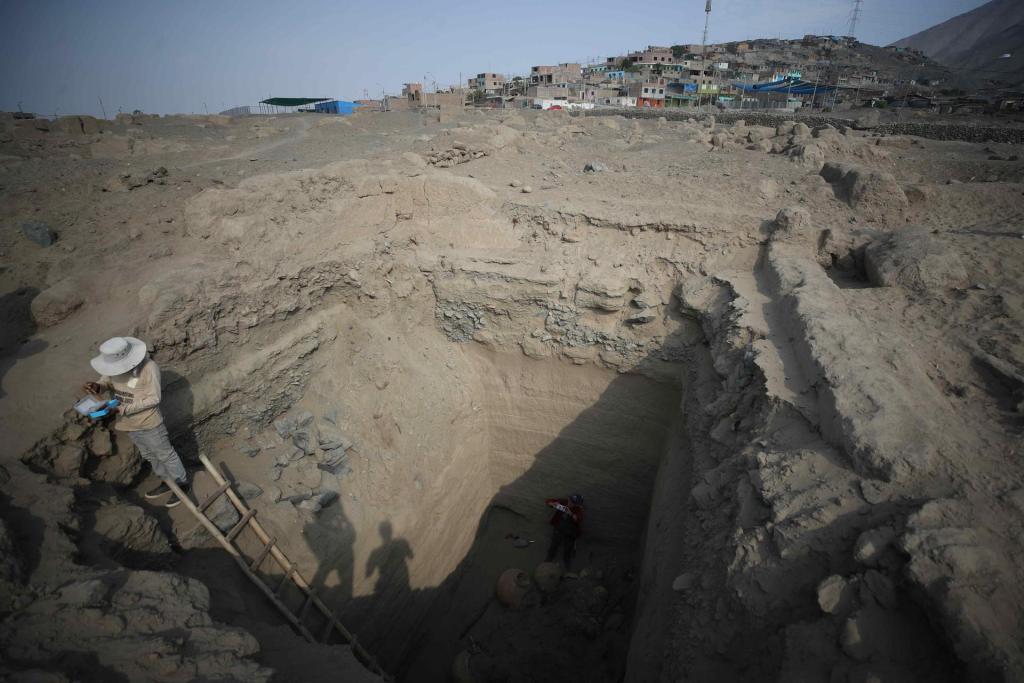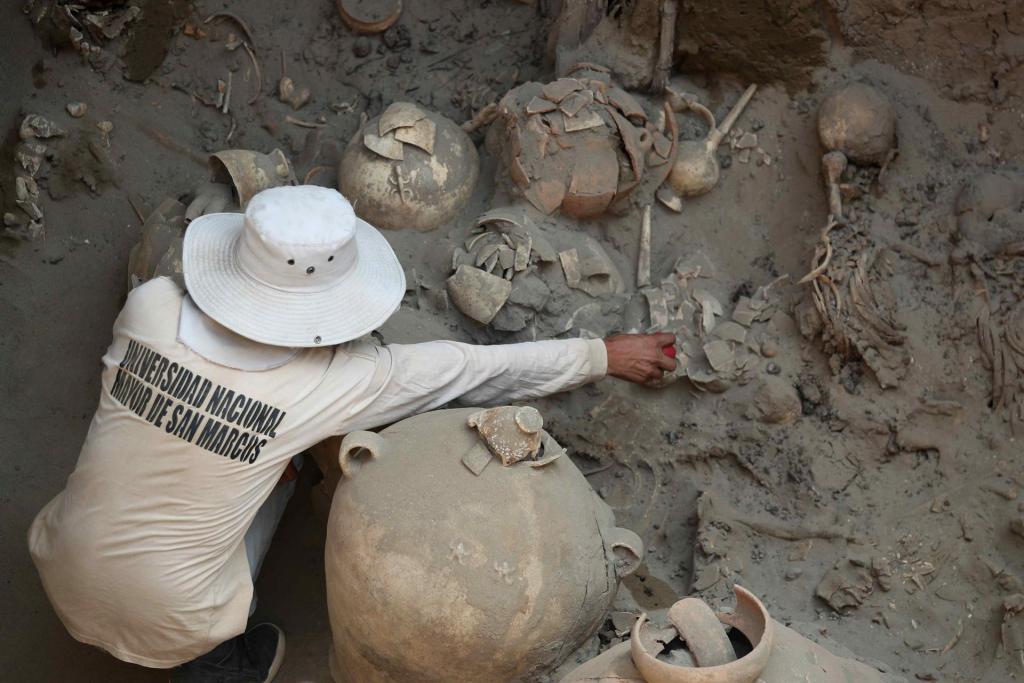
By Carla Samón Ros |
Huaral (Peru) (EFE) our era on the central coast of the Andean country.
It is the largest tomb discovered to date in the Macatón cemetery, an extensive burial site that rests on the right bank of the lower valley of the Chancay River, in the coastal province of Huaral, about two hours by road from Lima.
The pit, about six meters deep and seven meters long and wide, shelters the remains of a person protected by a large bundle and accompanied by five other individuals, who were possibly his relatives, children and sacrificed servants, according to archaeologists.

“Due to the characteristics of the tomb, the dimensions and the labor investment in its construction, it would be an elite character of the Chancay culture,” Dr. Pieter Van Dalen Luna, leader of the team of archaeologists from the National University, explained to EFE. Mayor of San Marcos in charge of the excavation of this site.
Along with the remains of these six humans, the remains of four llamas were found, which were surely also sacrificed in honor of the deceased.
In addition, the tomb treasures a great variety of about 25 ceramic vessels that, inside, contained offerings, mainly food, to serve the dead on their way to the afterlife.
A wooden oar found in the grave
The questions about this new discovery are still multiple. Well, they are waiting for the results of the analyzes to determine the sex, age and possible diseases of the six human remains.
They intuit, however, that the main character “would be a person dedicated to marine activity, suddenly fishing or collecting shellfish”, says Pieter Van Dalen.
The suspicion is based on the presence of a wooden oar inside his tomb. A “new” object that has not been found in any of the more than 80 graves excavated in the Macatón cemetery since 2018.
During the time of the Chancay culture, always according to the archaeologist, this funerary site was divided into family plots. And it was visited not only in times of burial, but “constantly” by members of society “as an object of worship to the ancestors.”
This culture experienced a decline throughout the fifteenth century. It coincided with the territorial expansion of the Incas, who expanded their empire, which they called Tahuantinsuyo, in that century.
“Heavily damaged”
Currently, the ancient cemetery is invaded by human settlements that were established in the area. And under whose feet, according to the researchers, remain vestiges of the Chancay culture, waiting underground for their moment.
In fact, the elite individual’s grave lies just 50 meters away from a block of humble, bare brick and plywood houses, and archaeologists think that there are “almost certainly tombs” beneath those dwellings.

“Although it is true, on the one hand, (that) the installation of the houses has occupied part of the archaeological zone, on the other hand it has also allowed the looters (looters of archaeological sites) to no longer come here,” says Van Dalen. .
The expert regrets that, over time, the Macatón site has been “intensively looted.” But he insists that the presence of the population has helped “care for and protect him.”
The entry The discovery of the tomb of a sea lord rethinks the enigmas about pre-Inca Peru was first published in EFE Noticias.






